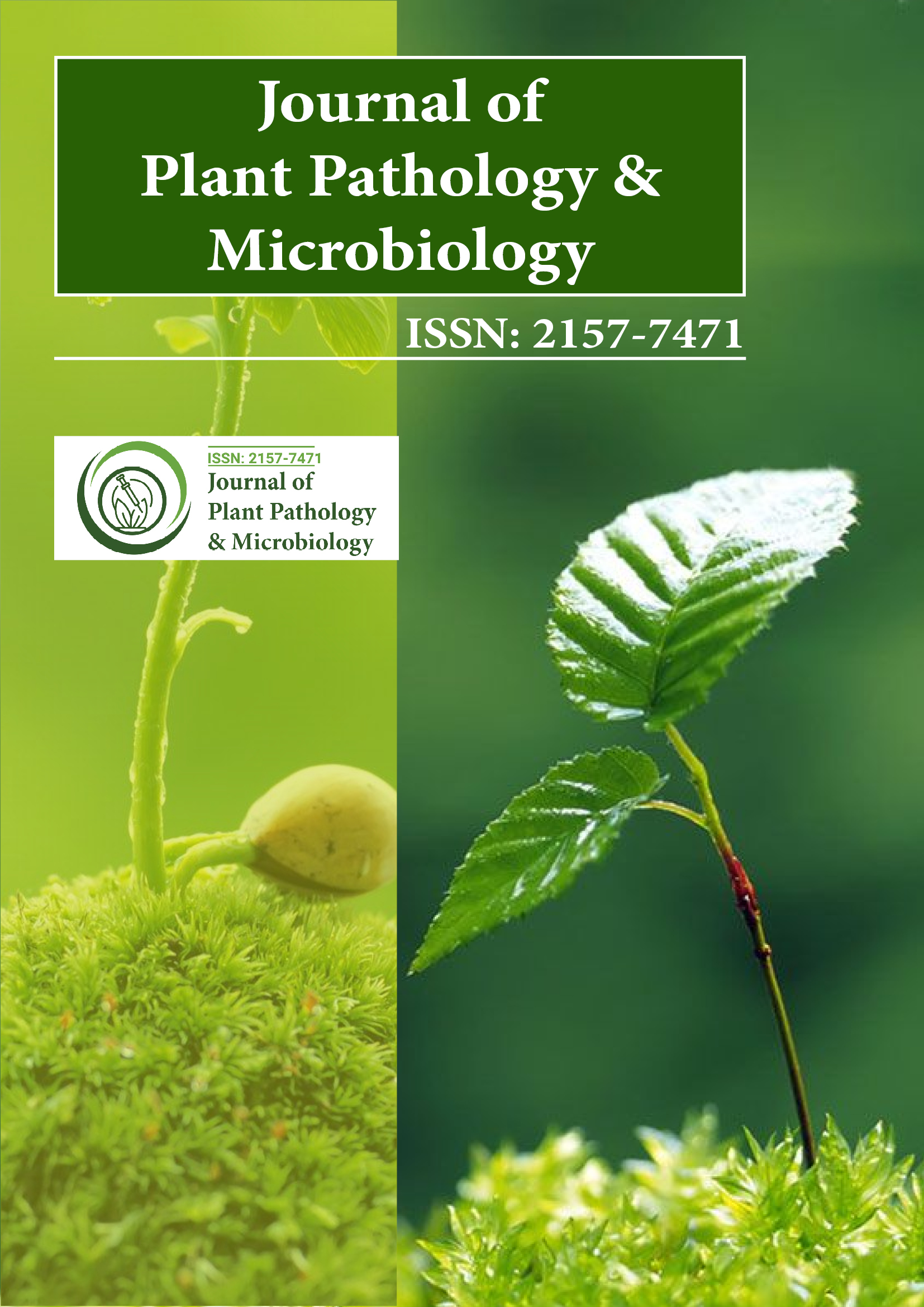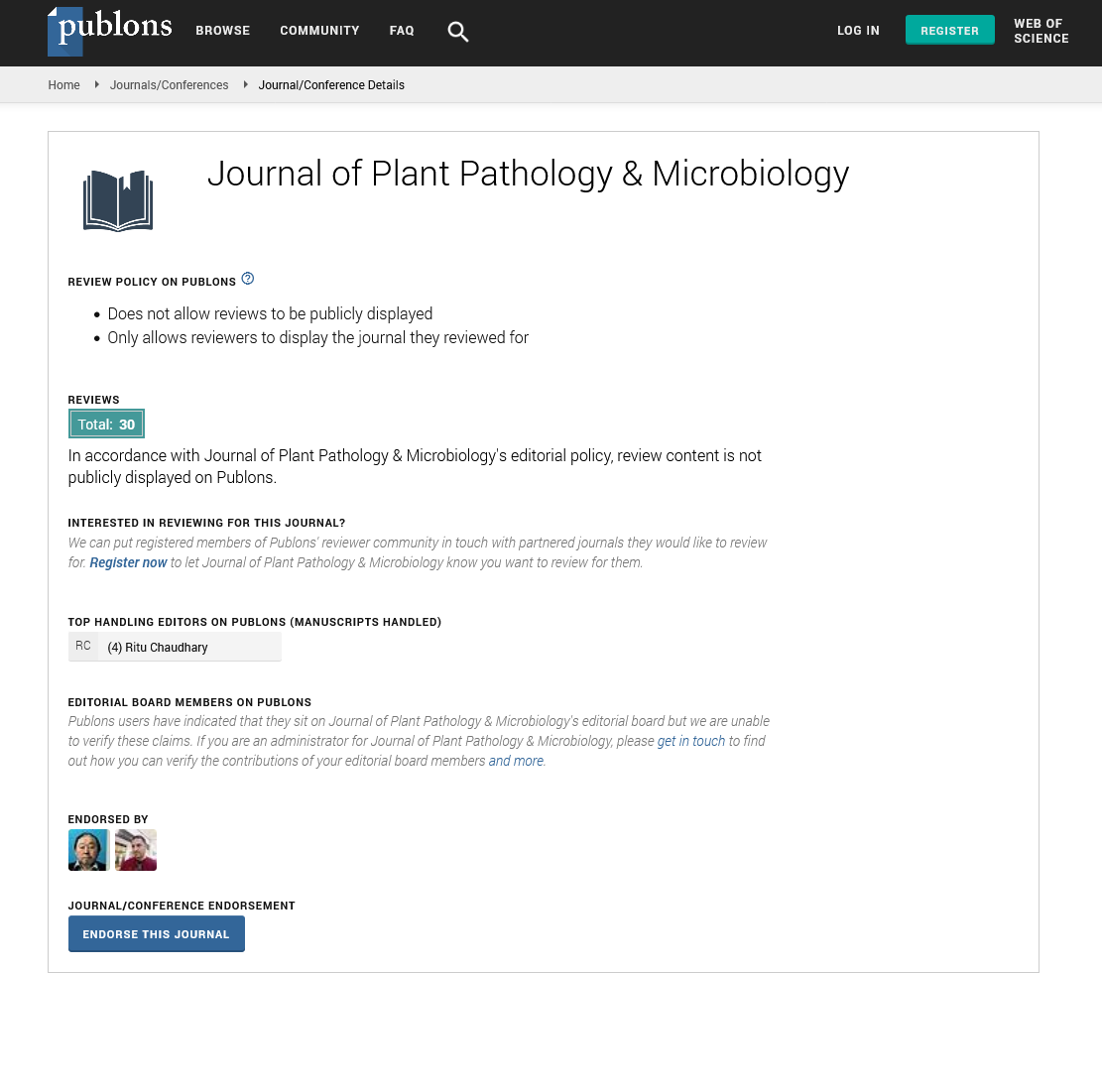Indexed In
- Open J Gate
- Genamics JournalSeek
- Academic Keys
- JournalTOCs
- CiteFactor
- Ulrich's Periodicals Directory
- Access to Global Online Research in Agriculture (AGORA)
- Electronic Journals Library
- Centre for Agriculture and Biosciences International (CABI)
- RefSeek
- Directory of Research Journal Indexing (DRJI)
- Hamdard University
- EBSCO A-Z
- OCLC- WorldCat
- Scholarsteer
- SWB online catalog
- Virtual Library of Biology (vifabio)
- Publons
- Geneva Foundation for Medical Education and Research
- Euro Pub
- Google Scholar
Useful Links
Share This Page
Journal Flyer

Open Access Journals
- Agri and Aquaculture
- Biochemistry
- Bioinformatics & Systems Biology
- Business & Management
- Chemistry
- Clinical Sciences
- Engineering
- Food & Nutrition
- General Science
- Genetics & Molecular Biology
- Immunology & Microbiology
- Medical Sciences
- Neuroscience & Psychology
- Nursing & Health Care
- Pharmaceutical Sciences
Short Communication - (2024) Volume 15, Issue 3
Plant Growth-Promoting Rhizobacteria: Mechanisms and Agricultural Applications
Sophia James*Received: 30-Aug-2024, Manuscript No. JPPM-24-28221 ; Editor assigned: 02-Sep-2024, Pre QC No. JPPM-24-28221 (PQ); Reviewed: 16-Sep-2024, QC No. JPPM-24-28221 ; Revised: 23-Sep-2024, Manuscript No. JPPM-24-28221 (R); Published: 30-Sep-2024, DOI: 10.35248/2157-7471.24.15.729
Description
Plant Growth-Promoting Rhizobacteria (PGPR) is a group of beneficial bacteria that colonize the root zone of plants and enhance plant growth and health through various mechanisms [1]. These bacteria are naturally present in the soil and can be isolated from the rhizosphere the region of soil influenced by plant roots. PGPRs are gaining significant attention in agriculture due to their ability to improve crop yield reduce the need for chemical fertilizers and pesticides and promote sustainable farming practices. The diverse mechanisms through which PGPR promote plant growth and the wide array of potential applications in agriculture makes them a valuable tool for enhancing crop production and soil health [2].
One of the primary mechanisms by which PGPR promote plant growth is through the fixation of atmospheric nitrogen [3]. Nitrogen is an essential nutrient for plants and while it is abundant in the atmosphere plants is unable to utilize it in its gaseous form. Certain PGPR species such as those in the genus Rhizobium have the ability to fix nitrogen by converting atmospheric nitrogen into a form that plants can absorb such as ammonium. This process is particularly beneficial in nitrogenpoor soils where the addition of nitrogen fertilizers may not be feasible or desirable. By enhancing nitrogen availability PGPR can significantly improve plant growth and productivity without the environmental drawbacks associated with synthetic fertilizers [4]. In addition to nitrogen fixation PGPR can also enhance plant growth through the production of plant hormones. One of the most common plant growth-promoting hormones produced by PGPR is Indole-3-Acetic Acid (IAA) a form of Auxin. Auxins are critical for regulating various aspects of plant growth including cell elongation root development and flower formation [5]. PGPRs that produce IAA can stimulate root development resulting in a more extensive and efficient root system. This enhanced root growth allows plants to absorb water and nutrients more effectively leading to improved overall growth especially under nutrient-limiting conditions or drought stress [6]. PGPR also promote plant growth through the production of Siderophore which are compounds that bind to iron and make it more available to plants. Iron is an essential nutrient for plants but is often present in the soil in forms that are not easily accessible to plant roots [7]. Siderophore-producing PGPRs help solubilize iron and facilitate its uptake by plants which can lead to improved plant health and growth. This mechanism is particularly important in soils where iron availability is limited such as alkaline or waterlogged soils [8].
Another important mechanism through which PGPRs promote plant growth is by suppressing the growth of harmful soil-borne pathogens. Many PGPR species produce antimicrobial compounds such as antibiotics hydrogen peroxide or volatile organic compounds that can inhibit the growth of pathogenic microorganisms in the rhizosphere [9]. This biological control mechanism helps protect plants from diseases caused by fungi bacteria and nematodes. By outcompeting or antagonizing plant pathogens PGPRs reduce the need for chemical pesticides and contribute to Integrated Pest Management (IPM) strategies that are more environmentally friendly and sustainable. In addition to directly suppressing pathogens PGPRs can also induce systemic resistance in plants. This phenomenon known as Induced Systemic Resistance (ISR) is a defense mechanism where the plant’s immune system is activated in response to PGPR colonization. Once activated the plant becomes more resistant to a broad range of pathogens including fungi bacteria and viruses even those that have not directly interacted with the PGPR. This immune priming effect provides long-lasting protection and can help plants cope with future infections [10].
Conclusion
PGPRs also improve plant growth under abiotic stress conditions. Plants face various environmental stresses such as drought salinity and extreme temperatures which can significantly hinder their growth and productivity. PGPRs help plants tolerate these stresses by producing compounds that enhance stress resistance. For example some PGPRs produce exopolysaccharides that help retain moisture in the soil reducing the impact of drought stress. Others can modulate plant metabolism to help plants cope with salt stress by reducing the accumulation of toxic ions in plant tissues. The ability of PGPRs to alleviate abiotic stress makes them valuable tools for improving crop productivity in challenging environmental conditions.
References
- Vejan P. Role of plant growth promoting rhizobacteria in agricultural sustainability a review. Molecules. 2016;21(5):573.
[Crossref] [Google Scholar] [PubMed]
- Lugtenberg B, Kamilova F. Plant-growth-promoting rhizobacteria. Annu Rev Microbiol. 2009;63(1):541-56.
[Crossref] [Google Scholar] [PubMed]
- Khoso MA, Wagan S. Impact of plant growth-promoting rhizobacteria (PGPR) on plant nutrition and root characteristics: Current perspective. Plant Stress. 2024;11:100341.
- Verma KK, Arora J, Li YR. Regulatory mechanisms of plant rhizobacteria on plants to the adaptation of adverse agroclimatic variables. Front Plant Sci. 2024;15:1377793.
[Crossref] [Google Scholar] [PubMed]
- Ikiz B, Dasgan HY, Gruda NS. Utilizing the power of plant growth promoting rhizobacteria on reducing mineral fertilizer, improved yield, and nutritional quality of Batavia lettuce in a floating culture. Sci Rep. 2024;14(1):1616.
[Crossref] [Google Scholar] [PubMed]
- Singh SK, Solanki MK, Seth CS, Li YR. Synergistic interactions of nanoparticles and plant growth promoting rhizobacteria enhancing soil-plant systems: a multigenerational perspective. Front Plant Sci. 2024;15:1376214.
[Crossref] [Google Scholar] [PubMed]
- Gupta R, Khan F, Alqahtani FM, Hashem M, Ahmad F. Plant growth–promoting Rhizobacteria (PGPR) assisted bioremediation of Heavy Metal Toxicity. Appl Biochem Biotechno. 2024;196(5):2928-2956. [Crossref]
[Google Scholar] [PubMed]
- Talukder MR, Ahmed M, Ahiduzzaman M, Haque MA. Decolorization, degradation and detoxification of mutagenic dye Methyl orange by novel biofilm producing plant growth-promoting rhizobacteria. Chemosphere. 2024;346:140568.
[Crossref] [Google Scholar] [PubMed]
- Reid TE, Kavamura VN, Mauchline TH. Agricultural intensification reduces selection of putative plant growth-promoting rhizobacteria in wheat. ISME J. 2024;18(1):129-131.
[Crossref] [Google Scholar] [PubMed]
- Ma Y, Nepal J, Ullah F, Rehman MM. Above-and below-ground feedback loop of maize is jointly enhanced by plant growth-promoting rhizobacteria and arbuscular mycorrhizal fungi in drier soil. Science of the Total Environment. 2024;917:170417.
[Crossref] [Google Scholar] [PubMed]
Citation: James S (2024). Plant Growth-Promoting Rhizobacteria: Mechanisms and Agricultural Applications. J Plant Pathol Microbiol.15:729.
Copyright: © 2024 James S. This is an open access article distributed under the terms of the Creative Commons Attribution License, which permits unrestricted use, distribution, and reproduction in any medium, provided the original author and source are credited.

